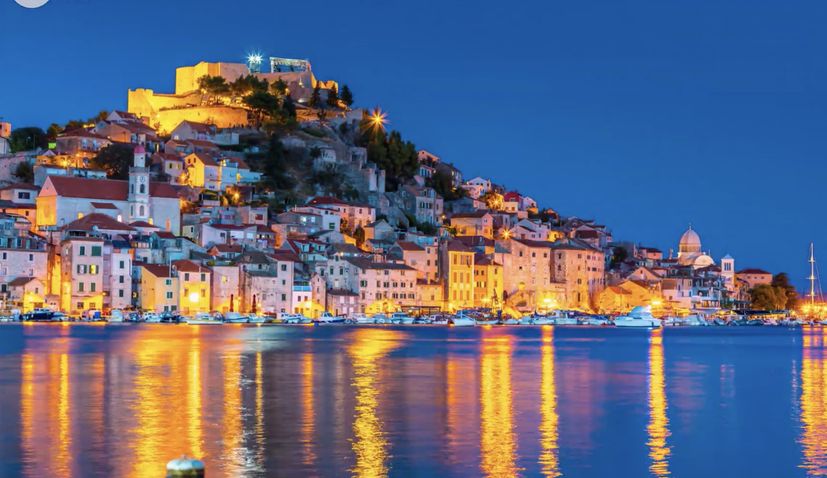Šibenik is frequently referred to as the city of Petar Krešimir IV, Krešimirov grad, after the Croatian king Petar Krešimir who lived in Šibenik in the 11th century. That was the time when the name of Šibenik was first mentioned by the king mentioned above. That was the beginning of Šibenik’s development.
Šibenik is situated in central Dalmatia, on the coastline where the Krka river flows into the Adriatic. It is a center of tourism, culture and art. Its nature is astonishing — there are 2 national parks in its surroundings: Kornati and Krka.
The national park Kornati represents numerous differently sized islands situated between Šibenik and Zadar. These differently shaped islands have always been Mecca and Medina for adventurers. The other national park situated nearby Šibenik is the River Krka with numerous waterfalls.
Along with the nature notabilities, Šibenik has huge historical and cultural offers. The Cathedral of Saint James, built in the 15th and 16th centuries, appears to be on the UNESCO world heritage list. The biggest theater in Croatia, The Theater of Šibenik was heavily damaged during the Croatian War of Independence. It was renovated and reopened back in 2001. Šubićevac fortress, city walls, fortresses of St. Michael (who happens to be the patron saint of Šibenik), St. Nicholas, St. John, a variety of old churches – they all represent the invaluable insight to the history of this Dalmatian city.
The annual International Children’s Festival is another treat, not just for the tourists but for the local people as well. The festival praises the youth, education for children and has been the trademark of Šibenik for 40 years.
Šibenik is a big sports center — plenty of halls, playgrounds, soccer fields, pools, and sports complexes. No wonder one of the world’s most famous basketball players, Dražen Petrović, who died in a car crash, came from Šibenik.
This city with 50,000 inhabitants cultivates every single notability it has — blue sea, nature, history, art, sports and many others.
